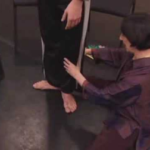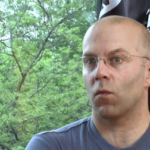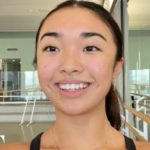Benefits and Research
The Alexander Technique attracts individuals wanting to improve mobility, ease postural discomfort, reduce chronic pain, and manage stress, while others seek lessons to advance their skills in the performing arts and athletic endeavours. Browse the menu lists below to learn more about how Alexander Technique can benefit you.
Use of resources
Please note that the content within the Research & Resources and Videos sections is provided only for general information purposes.
Use of Resources
Please note that the content within the Research & Resources is provided only for general information purposes. Many of the resources, such as books, are not free. Links to other websites or platforms are provided for viewers’ convenience, but ATC does not control or monitor them and accordingly cannot endorse their information or guarantee its accuracy and relevance. The use of content or links to third-party websites is at the viewers’ own risk. Viewers should contact an ATC-certified Alexander Technique teacher with any questions about the application of Alexander Technique to their specific issues.
Dance
- Benefits
- Resources
- Videos
- Testimonials
Postural alignment and ease of movement, which Alexander Technique promotes, are critical components of dance. Dancers who integrate the principles of Alexander Technique into all of their steps and movements have greater freedom to explore their expressiveness.
When dancers have poor posture their movements become less fluid and less visually appealing. A casual observer may perceive the imbalance and unnecessary muscular tension without necessarily consciously acknowledging it. When dancers lack natural poise they will attempt to find it by adding on layers of tension until they end up muscularly fighting themselves losing their sense of lightness. They end up pulling or holding themselves upright instead of allowing the energy to flow upwards through their bodies.
To feel more open or expansive, dancers may lift the chin, pull back the head while arching the back, which immediately creates a physiological disadvantage. If the neck stiffens and it pulls the head downwards into the spine and is no longer freely poised on top of the neck, dancers cannot move as freely or find balance as easily.
Sometimes a tyrannical culture of a dance studio can reinforce the dancers’ bad habits and encourage rigid thinking. Somewhere along the way, they stop listening to their bodies and impose order upon them instead.
As a result of these accumulative issues, over time, dancers’ kinaesthetic awareness may become less accurate, their expressive abilities may decline, and injuries and chronic pain may follow.
As a dancer and Alexander Technique teacher, Anne Bluethenthal points out, “Instead of seeing the body as a static set of conditions to be positioned, corrected, tamed, and polished, [with Alexander Technique] we become a continually changing process of events, responses and choices that may be observed, quieted, redirected, or left alone” (“Before you Leap,” 1996).
Alexander Technique can help integrate the physical, emotional, and expressive elements of dance as dancers learn to become exquisitely aware of their movements, achieve a more natural alignment, and inhibit habitual tensions and holding patterns that interfere with the flow of their dancing.
Instead of thinking in body parts, the Technique encourages the dancer to be aware of every single movement as it relates to the entire body and mind. Instead of thinking only of the line, position, and beauty of the movement, the dancer learns to use the Alexandrian principles of inhibition and direction to pay attention to the flow of energy of the mind and body as one.
General Articles
I am a dancer. I have focused on dance and movement for more than 30 years with the last 26 of those years learning and practicing Flamenco. Of course, along the way I have taken breaks but Flamenco has always been there in some form.
It wasn’t until I started training in Alexander Technique that I thought I had left that world behind. As life is funny and unpredictable, it turned out that the universe had a plan for me to get back into dance full force. Here I was with a lifetime of knowledge of movement and a mere three years of AT under my belt. As many of you know, AT training gives you a whole new way of looking at life and the world around you and I felt very blessed with the opportunity to combine these two worlds.
Easier said than done. Dance is fast, movement is fast, Flamenco is fast. Well, actually the stimulus that your brain sends to your body to move is fast, but the movement can be slow and extended, quick and sharp or whatever combination your brain can come up with. Dance is doing a lot with the body and combining the concepts of non-doing is an ongoing exploration.
Once I started back in Flamenco, I had to get my technique back, which means a lot of repetitive drills with my feet to get the sound and speed up to my standards. This can be exhausting for the body and the mind. Yes, I had to strengthen those muscles again but this time I added the idea of opposition. Knees forward and away took on a whole new meaning. As a flamenco teacher I have always stressed the importance of not sinking into the low half of your body, this just puts too much pressure on your knees. This time,” back, back and up” is helping me find a support in the whole body so my fast footwork can flow. I seem to have added a new direction for myself, allowing the feet to fly.
What I have played with so far is different AT ways of allowing the body to align for dance and Flamenco technique. Dance technique has traditionally been about placement, so for me instead of just placing my body in whatever position is needed, I try to allow the body to find that space.
It can take a while for me to get going with everything. My desire to jump in and get dancing is strong. I hear the music and the impulse to move is strong. Inhibition is key here. In my own rehearsing I sometimes have to inhibit for quite a while. What I mean by this is I have to stop, an active stop where I really have to not allow movement at all. This, I hate to say it but here is the truth, for me as a flamenco dancer this stop can be painful and frustrating. I hate it and I just want to get going. But then I remember to remember, I send my directions and then start to explore moving my arm up and down, then I add a hand, then a spiral, then some footwork or whatever I am working on that day.
Alexander talked about quickening consciousness and for me sticking with the process, as tough as that might be, is far more interesting than just the doing the steps over and over.
– Barbara Diaz, Dancer and Alexander Technique Teacher




